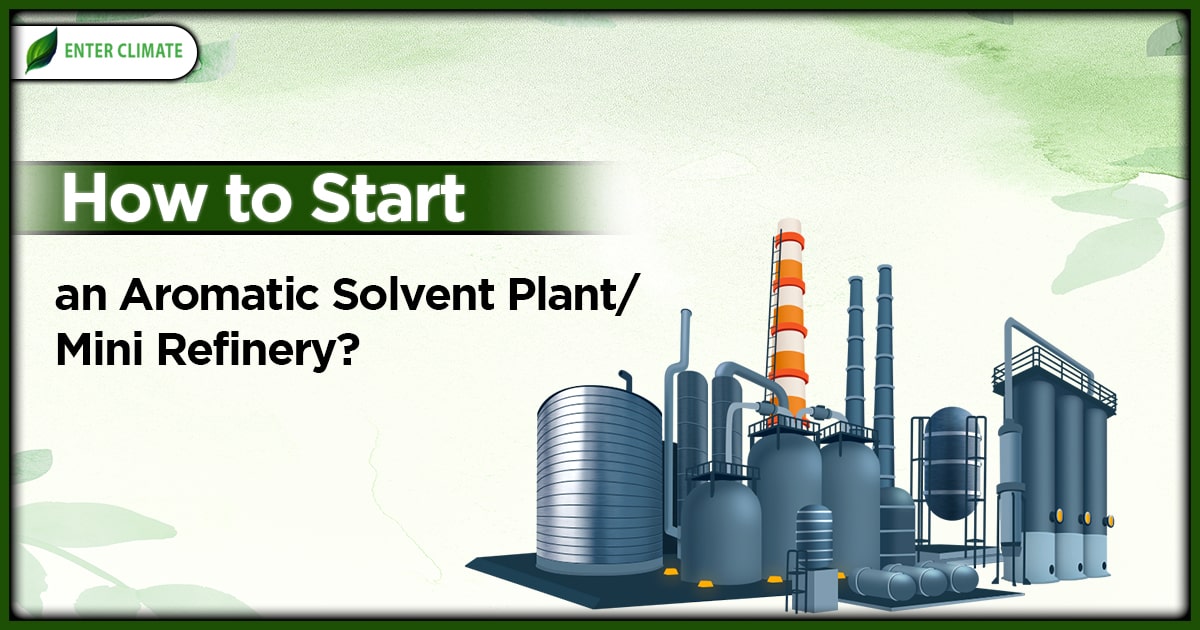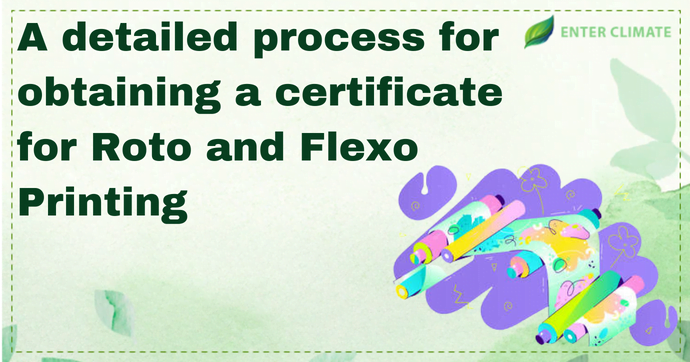How to Start an Aromatic Solvent Plant/ Mini Refinery?
 10 Oct, 2023
10 Oct, 2023 
Solvents are needed for many crucial chemical transformations to increase the contact surface between catalysts and reagents. Aromatic solvent is the core of many industrial chemical processes, coatings, formulations of consumer products and research work. Aromatic solvents play an essential role in a wide variety of applications in the speciality chemicals industry. An aromatic compound containing crude oil is the main source of raw material for aromatic solvents. Physical processes that are used in the petrochemical industry produce aliphatic and aromatic hydrocarbons. Aromatic Solvents available today in the market are categorised based on the type, such as toluene solvent, xylene solvent and ethylbenzene solvent and based on their application in Aromatic Solvent Plant, such as paints and coating solvents, adhesives, printing ink, cleaning and degreasing solvent, etc.
Types of Aromatic Solvent
- Aromatic 100: also marketed as Solvent naphtha (petroleum), Light aromatic, Arosol 10, HiSol 10, Solvent 100, Atosol 100, Solvesso 100
- Aromatic 150: also marketed as High Flash Aromatic Naphtha; Type II Heavy Aromatic Solvent Naphtha hydrocarbons; C10 Aromatics
- Orthoxylene: also marketed as 1,2-Dimethylbenzene; 1,2-Xylene; 2-Methyltoluene
- Orthoxylene: also marketed as 1,2-Dimethylbenzene; 1,2-Xylene; 2-Methyltoluene
- Xylene: also marketed as Xylene mixture of isomers; 1,2-xylene; 1,3-xylene; 1,4-xylene
- Toluene: also marketed as Methylbenzene; Toluol; Methylbenzol, Phenylmethane
- Aromatic 200, Methyl naothaline etc.
Uses of Aromatic Solvents
An Aromatic Solvent Plant can be set up easily and configured to prepare aromatic solvents like C9, C10, Xylene, Toluene, mix-xylene, etc. Aromatic solvents are used in developing and producing emulsifiable concentrate (EC) and oil dispersions (OD) formulations of agrochemicals. Toluene and xylene are in massive demand from the pharmaceutical, chemical and dye manufacturing industry. C9, C10, and C11 are used for making paints, fertiliser and pesticide industries, which use them as raw materials. The following industries are bulk consumers of aromatic solvents in India.
Agrochemical Industry: The agrochemical industry continues to be very innovative in developing new technologies.
Fuel Additive Manufacturers: Aromatic Solvents are needed to combine different molecules for fuel additive formulation in the form of carrier fluid.
Oilfield Chemical Manufacturers: Aromatic Solvents are used to manufacture chemical formulations of corrosion inhibitors, flow improvers for protecting oil field assets and detergent packages.
Coating Manufacturers: Aromatics are universal solvents in paint or coating industries. Therefore, they are ideally suited for mixing resin, additives, pigments and colourants in one formulation.
Process of Aromatic Solvent Manufacturing
There are several methods to separate aromatic solvents from aromatic/ aliphatic solvent mixtures at micro levels using conventional HPLC and at sub-micro levels using miniaturised techniques. On the other hand, the separation of the components of similar mixtures contained in the reformate fraction of an oil refining process needs to be effected at a macro scale. The mixtures of aromatic and aliphatic solvents are separated at the macro level mainly by distillation and liquid-liquid extraction involving conventional solvents. After the raw material is distilled, it goes through a condenser, followed by a blending unit and finally into the storage tanks to recover the lighter fractions with better purity.
Sulfolane Process: Aromatics such as benzene, toluene and xylene, which are essential in many areas of the chemical industry, are in high demand. The need for Aromatic Solvent Plants is further growing due to the expansion of other potential markets, such as plastics and chemicals. The conventional processes for aromatic separation/ process recovery involve liquid-liquid extraction. Distillation requires relatively high energy inputs. Liquid–liquid extraction would involve large volumes of extracting agents such as sulfolane and ethylene glycol. The sulfolane technique is suitable only for mixtures with 20% or higher aromatic components.
How to set up an Aromatic Solvent Plant
Market Research: Market research is the process of gathering information about customers and prevailing market trends. Conducting a proper market search can help you define, target the market and understand the viability of a new business amidst factors that come into play.
Ensure Raw Material Supply: the extraction mode during the preparation of aromatic solvent uses organic solvents such as methanol, toluene or acetone and solvent mixtures. Therefore, ensuring a steady and reliable supply of raw materials is important. There are two types of raw material: paraffin-based raw material and aromatic raw material. There are two common sources of raw material, i.e. import and domestic suppliers (such as IOC, HPCL, BPCL, etc.)
Procuring Refining Equipment for Aromatic Solvent Plant
The machinery and equipment are easily available in the domestic market and can be installed in an open area with enough space to set up the following equipment.
- Boiler/ Heating Chamber
- Cooling Tower
- Distillation Unit
- Condenser
- Blending Unit
- Storage Tanks
Licences and Authorisation Required to Set Up an Aromatic Solvent Plant in India
- Mini refinery License
- Authorisation for hazardous waste management
- Building plan approval from the Municipality
- Water supply sanction and connection from ULBs
- CGWA NOC for Water Abstraction
- Factory Licence
- Fire NOC (No Objection Certificate)
- GST Registration
- Explosive license
Benefits of Setting up an Aromatic Solvent Plant in India
The benefits of starting a mini refinery / aromatic solvent manufacturing plant are
- Accelerate project deadline
- Enhanced quality control
- Reduced energy use
- Decreased capital expenditure
- Smaller plant footprint (area)
- Fieldwork reduction
- Reduced need for onsite skilled labour
- Quicker financial returns for installed plant
- Improved safety
Conclusions
Designing an aromatic solvent plant from the simplest straight-run aromatic solvent production plants to more sophisticated refineries is becoming a flexible and cost-effective option for producers in smaller, less accessible areas. These refineries can cater to the niche market in India, which is heavily dependent on imports due to a lack of domestic refining facilities. With new oil fields and supply chains being discovered and created, these plants can also be moved from one location to the next or transformed into larger or redesigned plants. This is an excellent opportunity for entrepreneurs to enter the vast refinery sector and capture a significant market share.
FAQs
Pure aromatics like Benzene, Toluene and Xylenes are the petrochemical industry’s primary feedstock/significant building blocks. Benzene is the essential raw material for producing Linear Alkyl Benzenes (LAB), nylon, phenol, polystyrene caprolactam, etc. It is a basic raw material used by many chemical manufacturers and the base chemical manufactures for different types of dyes and their intermediates.
Yes, mini-refineries can also be customised to produce various products from naphtha, gasoline, jet fuel and diesel. These process units can also be designed to efficiently process various crude products such as LNP, HNP, white oil, agarbatti oil, cutting oil, ink oil, mineral turpentine oil, rolling oil, etc.
Modular structures are beneficial when mini refineries are designed with limited capital. In such plants, only those capabilities that are needed for the time being are added with a scope of further addition in the future.
The ability to have mini refineries in remote locations helps reduce transportation costs and ensures regions are not as vulnerable to external exports and fluctuations in market prices.
The scale of smaller refineries poses a much smaller environment-related risk in the event of an accident. Many domestic companies manufacture a range of mini refineries with state-of-the-art pollution abatement features and designs that offer a route to better emissions management.
Read our Article: Business Setup













